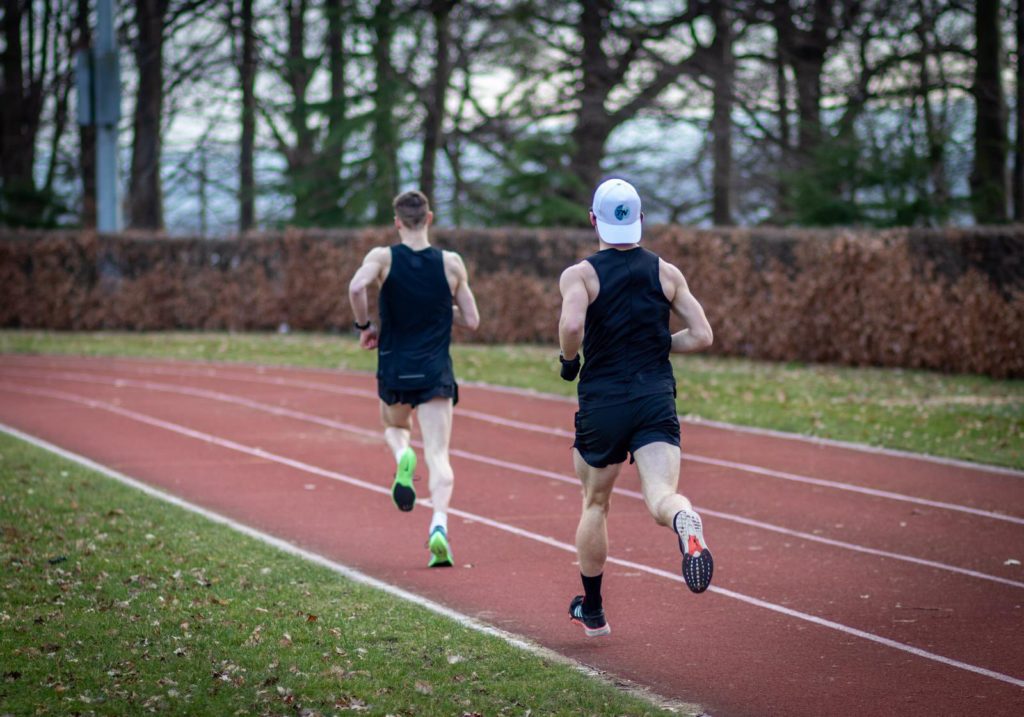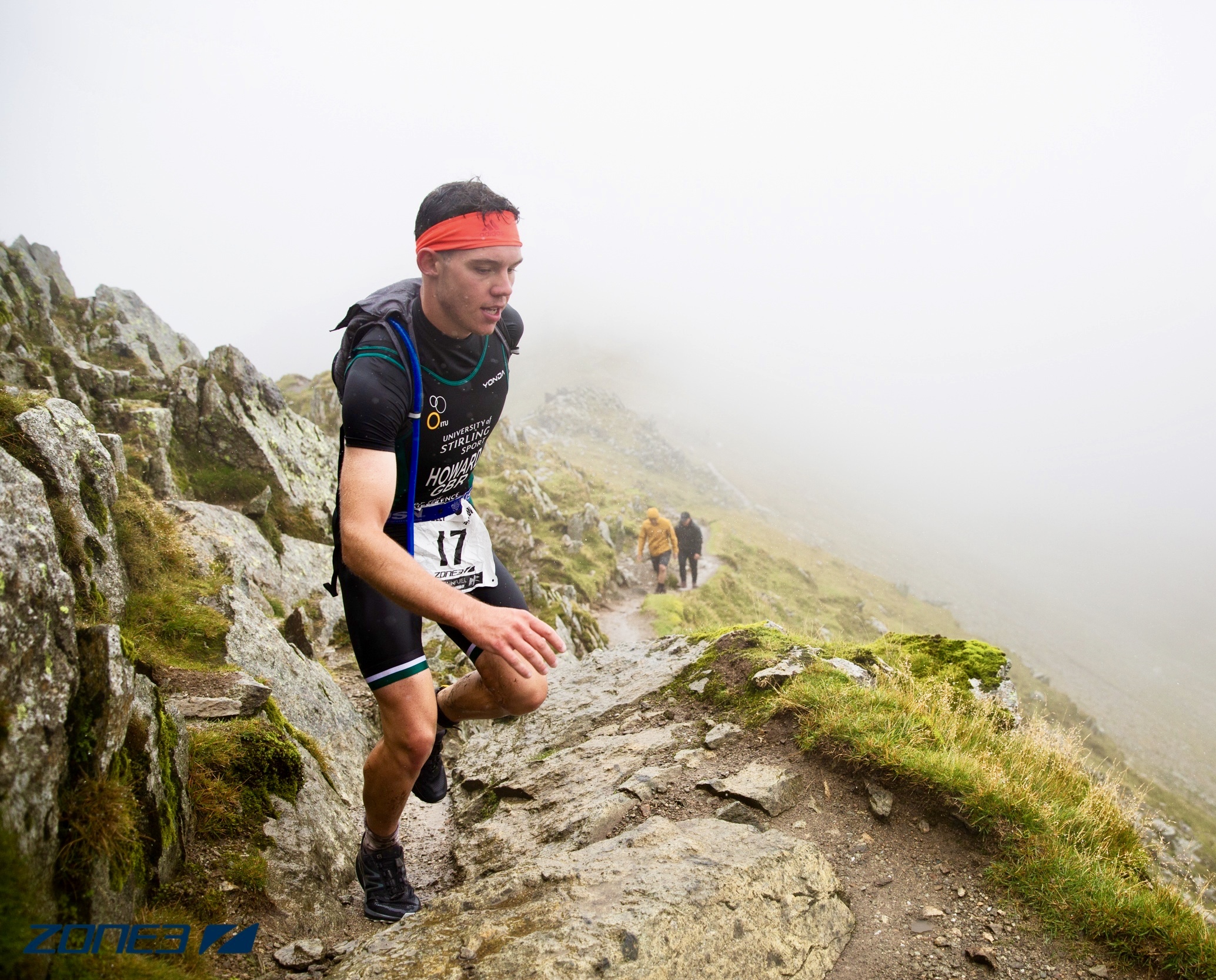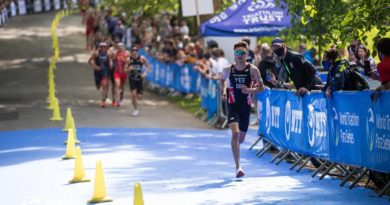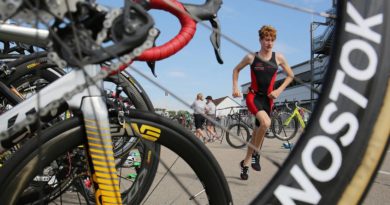High Performance Workout – 400m x 20 repeats
A High-Performance Workout – 400 repeats may be for you if you’re looking for a running workout that will challenge you both physically and mentally in a short amount of time.
Nonetheless, ramping up the intensity with some intervals to maximise your oxygen consumption and quickly increase your heart rate does come with a disclaimer.
Slogging away mile after mile will not improve your running performance. Triathletes whether recreational or age-group can put in hour upon hour of training, only to find they’re running the same speed as the year before.

Long runs do build stamina and durability and help you maintain good form under fatigue but in order to run faster, you have to (not surprisingly) run faster and the easiest way to do this is by interval training. This holds true for running all triathlon distances from sprint to IRONMAN.
Of course, you need to build up your aerobic endurance but this does not mean running slow in every workout. This is where ‘Repeats’ are perfect as a second quality workout in a week where you do shorter, harder repeats, such as 200s and 400s, more specific to actual race pace whilst building endurance, strength, speed, technique and aerobic foundation, and should be completed throughout the year.
This type of workout helped me run my fastest 5km road race in the Lancashire village of Barrowford in April, having run the Podium 5k ‘Sub-14.30’ Race, in a time of 14:23. Smashing my previous road 5km best of 15:27 which was set – pre-lock down – at the Self Transcendence 5K (Inc Scottish Championships) in Edinburgh in 2019, by a baffling 1 minute 4 seconds.

Take Marathon World Record holder Eliud Kipchoge. He schedules 400m repeats into his training at least once every month, completing workouts such as 25 to 30 x 400m repeats in 62-64 seconds with 30-60 seconds rest, depending on where he is in his training cycle.
Of course, we do not expect you to follow his lead but you can achieve a scaled down version to improve your running times.
Other elite athletes known to include 400m repeats into their training include Mo Farah, Kenenisa Bekele, Matt Centrowitz; the list goes on.
[Video] Below is a high-performance workout of 400 x 20 repeats that me and my fellow compariot, international triathlete Cameron Main undertook on a ‘Track Tuesday”, at the University of Stirling Triathlon Performance Centre under the watchful eye of our performance coach Andrew Woodroffe.
Disclaimer: Please note 400 x 20 repeats are strenuous workouts and should always be tailored to the individual by an experienced coach depending on their target race distance, physiological profile, training and injury history.
Our repeat track session consisted of 4 sets of 5 X 400m with a 60 second jog recovery after each rep with no extra recovery after each set. Just straight on to the next set as the shorter rest periods ramp up the intensity of a workout
Ultimate Workout
Set 1 – 5 x 400 on 76 second laps
Set 2 – 5 x 400 on 72 second laps
Set 3 – 5 x 400 on 69-70 second laps
Set 4 – 5 x 400 on 66-68 second laps
By running at an ascending 5K pace (not goal pace), we train at an effort level at or above 90% VO2 max, the maximum oxygen consumption level needed to hit in order to trigger the benefits targeted by this type of workout. By limiting recovery to a 60 second jog we begin the next repetition at close to the same VO2 max level (since you stay at VO2 max for a very short period following each repetition)
The outcome of these type of track ‘repeat’ sessions coupled with our base aerobic endurance training is that I am now a sub-15/5k runner and Cameron, an amazing sub-14/5k runner and both of us can run a sub-30/10k. This was not always the case.
So how do you go about implementing 400m repeats into your own training? Well, you build gradually. These workouts are very taxing both physically and neuromuscular, so be conscious of going into them sharp and ready to perform. If you’re doing these workouts as part of a long speed build (or as a newer runner), break the first sessions into sets/reps to allow for additional recovery.
Start with a modest workout like 4 × 400, with a 3-minute jog recovery and do the workout every week or two. For example, you may structure your early season workouts for a 21-minute 5K run—a 4:12 minute/km. Your weekly track session would then build up over a course of weeks for you to achieve a 4-set x 400 workout with a 2-minute jog recovery.
Plan to hit 20 × 400 four to six weeks before your goal race. Alternatively, if you’re focused on shorter races like 5Ks, you might start with shorter, speedier intervals, progressing from 20 × 200 to 20 × 300 to 20 × 400, each time with a 60 second 200-meter jog recovery.
[VIDEO] TriNations Luke Howard – Time Trial sub-15/5k
Do not go out to hard as learning to distribute your effort over the course of the workout is one of the keys to success. If you have to stop and put your hands on your knees to catch your breath before starting your recovery jog, you’re going too hard.
You’ll want to steer clear of these ‘repeats’ early in your training cycle, they look challenging and appealing, but without the right neuromuscular build can easily result in an injury. If you want a big hit of speed early on in your training, consider an extensive high count, shallow grade, hill workout instead.

We all start at the beginning so in consultation with your coach keep changing your workout designs to find exactly what works for your desired targets and cruise to a PB in no time.
If you’re interested in finding out more about high performance workouts contact: @woodroffecoaching
Andrew is a UKCC Level 3 Triathlon Coach (with distinction) and Lead Performance Triathlon Coach at the University of Stirling working with athletes internationally. With an extensive background in Triathlon both in short-course and long-distance Andrew has frequently climbed podium steps and understands the pathway, the nature of performance and how to overcome the challenges involved.





